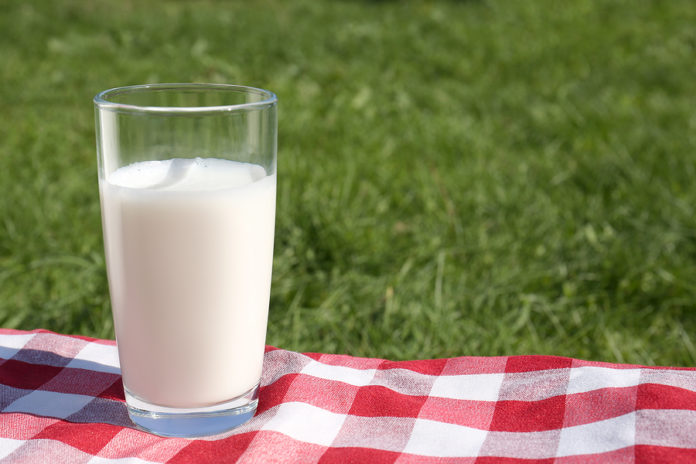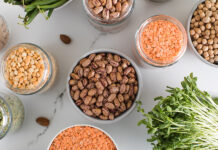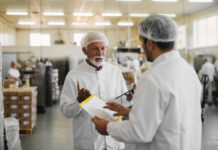
By Rasmus Mortensen, CEO of Lyras
There is no doubt that the dairy market is a global giant. Milk production and the demand for dairy continue to increase at a rapid rate worldwide, in large part due to population growth, rising incomes, and urbanization. This increased demand puts growing pressure on natural resources, which include freshwater and soil, alongside energy resources needed for manufacturing raw materials into high-quality and great-tasting products.
Millions of farmers worldwide tend approximately 270 million dairy cows for milk production. Because of this staggering statistic, its production impacts the surrounding environment in various ways, the scale of which depends on the practices of dairy farmers and feed growers. From a consumer perspective, dairy enthusiasts have the right to not feel guilty about how their products are farmed, but in terms of dairy businesses, creating more sustainable methods of production should always be a priority to reduce waste, cut energy costs, and continue to make changes that best help the overall push towards net zero being adopted across all industry sectors.
Sustainable production practices in the dairy industry may currently be harder to come by, but to truly address dairy sustainability and create a more energy-efficient, greener future, sustainable technologies need to be adopted across production lines on a global scale.
The problems of milk pasteurization
Cow’s milk takes a heavy toll on the planet. For every litre produced globally, approximately 3 kg of greenhouse gases is released into the atmosphere. With total global emissions currently around 50 billion tons of carbon dioxide, dairy emissions equate to about 3.4% – almost double the impact of aviation. By far, the biggest source of those emissions is methane, although CO2 emissions play a part due to massive energy costs and production waste.
Over 80% of total energy use on a dairy farm is accounted for by milk cooling, water heating, and vacuum pumping. This figure can be attributed to traditional pasteurization techniques, which are carried out by using heat. During the process, significant energy is needed to heat liquids to relatively high temperatures to kill bacteria, and then similarly just as much is needed to rapidly cool them to ensure no lasting damage is done to the nutritional makeup of the product. Due to this, regular pasteurization techniques can cause a massive amount of wasted energy. These energy costs quickly add up, alongside the process producing more water waste and carbon dioxide emissions that directly combat the demand for sustainability in dairy systems, adding to the overall global environmental footprint of the industry.
Shining light on a low-energy solution
UV light utilization holds the answer to providing a new alternative pasteurization solution. Its benefits allow the removal of pathogens from liquid products – not just water, but also when applied to milk production as well. In comparison to heated solutions, a UV-light-powered process can reduce energy consumption, while maintaining – if not heightening – end-product quality.
With more sustainable pasteurization technology that utilises UV instead of heat, dairies can save between 60 and 90% of the energy and 60 to 80% of the water that traditional pasteurization methods would otherwise require. This paves the way for major energy and carbon dioxide savings in dairy production lines worldwide – especially important given the continually rising energy prices we’ve seen over recent years.
In switching to this sustainable solution, greenhouse gas emissions per company can decrease rapidly – a significant impact if adopted industry-wide.
A greener future for the dairy industry
High-technology dairy production alternatives can lead to not only relatively short returns on investment, but also significantly lower operation costs through reduced energy and water consumption, increased operational hours, and overall, less cleaning and maintenance needed. An improved, higher quality end-product also provides benefits both on a business demand end, and directly for consumers.
Yet ultimately it comes down to the dairy farm as to whether the impact can be as great in helping the environment. Larger dairy production lines will have significantly greater potential to reduce their energy consumption by switching to these solutions than smaller dairy farms with lower energy consumption. Like it is across many industries, we look to the massive production giants to adopt sustainable solutions in order to cause wider change, and because the incentive of a higher-quality, lower-cost product is there, it only makes sustainability that much more enticing from a business incentive perspective.
Over 80% of total energy use on a dairy farm is accounted for by milk cooling, water heating, and vacuum pumping. Maximizing quality can therefore become part of molding a greener future for the dairy industry, replicable on a global scale and making a serious difference to the overall environmental footprint.
 In 2017, when Rasmus Mortensen was finishing the last year of his master’s in Environmental Engineering Technology at Aalborg University, he developed a technology capable of, according to himself, revolutionizing the food industry. Mortensen cracked the code to how ultraviolet light can replace the energy-intensive pasteurization systems, which have been used in the industry for decades – a technology later named raslysation (RAS: first three letters of the inventor’s name, and LYS: the Danish word for light). He never got the chance to finish his master thesis; he instead set out to realise it by starting his own business, Lyras, in Aalborg, Denmark. “My biggest fear was that my results were going to end up in a drawer somewhere. I could see tremendous potential and I wanted to act on it.”, Mortensen says. Since 2017, Lyras has kept growing out of its physical surroundings, and today its team of 68 sells and services UV systems throughout the world.
In 2017, when Rasmus Mortensen was finishing the last year of his master’s in Environmental Engineering Technology at Aalborg University, he developed a technology capable of, according to himself, revolutionizing the food industry. Mortensen cracked the code to how ultraviolet light can replace the energy-intensive pasteurization systems, which have been used in the industry for decades – a technology later named raslysation (RAS: first three letters of the inventor’s name, and LYS: the Danish word for light). He never got the chance to finish his master thesis; he instead set out to realise it by starting his own business, Lyras, in Aalborg, Denmark. “My biggest fear was that my results were going to end up in a drawer somewhere. I could see tremendous potential and I wanted to act on it.”, Mortensen says. Since 2017, Lyras has kept growing out of its physical surroundings, and today its team of 68 sells and services UV systems throughout the world.







